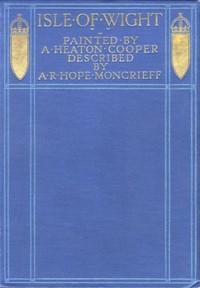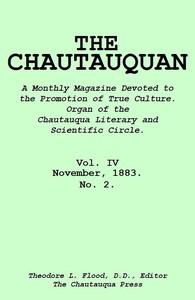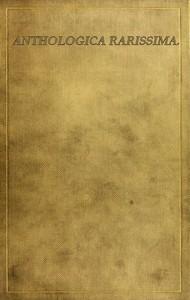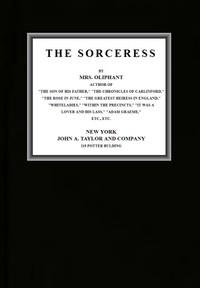Read this ebook for free! No credit card needed, absolutely nothing to pay.
Words: 52728 in 22 pages
This is an ebook sharing website. You can read the uploaded ebooks for free here. No credit cards needed, nothing to pay. If you want to own a digital copy of the ebook, or want to read offline with your favorite ebook-reader, then you can choose to buy and download the ebook.


: Isle of Wight by Moncrieff A R Hope Ascott Robert Hope Cooper A Heaton Alfred Heaton Illustrator - Isle of Wight (England) Description and travel
FACING PAGE
ISLE OF WIGHT
THE ISLAND
The Channel Island, as thus its full style imports, has a natural history of singular interest to geologists, who find here a wide range of fossiliferous strata, from the Upper Eocene to the Wealden clay, so exposed that one scientific authority admiringly declares how it "might have been cut out by nature for a geological model illustrative of the principles of stratification." Perhaps the general reader may thank a writer for not enlarging on this head; but a few words must be said about the geological structure that shapes this Island's scenery, forming, as it were, a sort of abridged and compressed edition of no small part of England. It divides itself into three zones, which may be traced in the same order upon the Isle of Purbeck in Dorset. Through the centre runs a backbone of chalk Downs, a few hundred feet high and an hour's walk across at the broadest, narrowing towards either end to crumble into the sea at the white cliffs of Culver and of the Needles. To the south of this come beds of sand and marl, through which the chalk again bulges out in isolated masses on the south coast to top the highest crests of the Island, resting on such an unstable foundation that extensive landslips here have thrown the architecture of nature into picturesque ruin. The north side in general is tamer, a plain of clays dotted by gravel, better wooded than the rest, though much of its old timber has gone into the wooden walls of England, once kept in repair at Portsmouth.
All that variety of soil and surface is packed together into a roughly rhomboidal shape, 23 miles long by 13 or 14 miles at the broadest, about the size of Greater London, or say 1/36000 part of the habitable globe. Within its circumference of 60 miles or so, this space of some 96,000 square acres holds a population of 82,000, beside innumerable transient visitors. A pundit of figures has taken the trouble to calculate that all the population of the world could find standing room in the Island on the foot of four to the square yard, if the human race agreed on spending a Bank Holiday here; but then little room might be left for donkey-rides or switch-back railways. While we are on the head of statistics, it may be mentioned that several scores of guide-books to the Isle of Wight have been published, from Sir Henry Englefield's noble folio to the small brochures issued by hotels, these works containing on an average 206,732 words, mostly superfluous in many cases; that 810,427 picture post-cards or thereabouts pass annually through the post-offices of the island; that, in ordinary seasons, it sits to 1723 cameras; that the hotel-bills annually paid in it would, if tacked together, reach from St Petersburg to Yokohama, or if pasted over one another, make a pile as high as the new War Office; and that 11.059 per cent. of the newly married couples of Brixton, Balham, Upper Tooting, etc., are in each year estimated to spend at least part of their honeymoon here, who come back to confirm a prevailing belief that in no other part of the British Isles does the moon shine so sweetly; while, indeed, a not quite clearly ascertained proportion of them live to assert that the scenery of the Island and the happiness of the marriage state have alike been more or less overrated. I give these figures for what they are worth, along with the unquestioned fact that the Isle of Wight belongs, in a manner, to the county of Hants, but has a County Council of its own, and in general maintains a very insular attitude of independence, modelled on the proud bearing of Great Britain towards mere continental countries.
Facts and figures somewhat fail one who comes to lecture on the original population of this Island. The opinion fondly held in a certain section of "smart" society, that the lawn of the Squadron at Cowes represents the Garden of Eden, seems to rest upon no critical authority; indeed Adam and Eve, as owners of no yacht, would not be qualified for admission to this select enclosure. With some confidence we may state that the Island was first peopled by aborigines enjoying no protection against kidnappers and conquerors, who themselves found it difficult in the long run to blackball undesirable aliens, as Australia and New Zealand try to do under the protection of fleets steaming forth from the Solent. There are well-marked indications of invasion by a Belgic tribe from the mainland, to make this a "free" state, as early prelude to King Leopold's civilisation of the Congo. But we may pass lightly over the Celtic period, with place-names and pit-dwellings as its records, to come into clearer historic light with Vespasian's conquest in A.D. 43.
Next came northern pirates, who would be not so much interested in the mild climate of the Island, as in the creeks and landing-places of its shores. They, too, have left relics of their occupation, chiefly in the graves furnished with utensils and ornaments of heathen life. But when Jutes and Saxons had destroyed the Roman civilisation, they fell under another influence spread from the Mediterranean. Bishop Wilfred of Selsey has the credit of planting, or replanting, Christianity in the Island. It could hardly have taken deep root, when the Danes came to ravage the monastic settlements. For a time the Cross and the Raven must have struggled for mastery here like the encountering tides of Solent, till that new wave of invaders ebbed back or was absorbed into the old one; then again the Island became overflowed by a fresh storm of conquest. If we consider from how many races, in three continents, the Roman soldiery were drawn, and how the northmen must have mixed their blood with that of a miscellany of captives, it is clear that, when overrun by a fresh cross-breed between Gauls and Vikings, the population of our islands, large and small, could in many parts have been no very pure stock, such as is fondly imagined by the pride of modern Pan-Celticism and Anglo-Saxondom.
Under them the Island was happy enough to have little history, though it had again to be on its guard when Dutch admirals talked of sweeping the English ships from the Channel. It saw William's fleet sail by on the way to Torbay; and two years later it seemed about to have from its southern cliffs the spectacle of a hundred French sail engaging the English and Dutch squadrons; but the scene of that encounter was shifted to Beachy Head, where it ended in a manner not much dwelt upon in our naval annals. Then the long struggle with Napoleon once more turned this outpost of England into a camp. In the peaceful days that followed, the governorship became a mere ceremonial function. The title, held by Prince Henry of Battenberg, was passed on to his widow, the youngest daughter of Queen Victoria, whose death at Osborne makes the last date in this Island chronicle.
The soil is well cultivated, and many of the farms look thriving, though the rank hedges and the flowers that colour some of the pastures, spread a more pleasing view for an idle stranger than for a practical cultivator. The Downs support flocks as well as golf clubs; the breed of Island sheep was highly esteemed of old, where the climate makes for early lambing. When some parts were overrun with "conies," Sir E. Horsey had the name of bringing in hares, which he paid for at the rate of a lamb a-piece; but foxes and badgers have not crossed the Solent.
The coast folk carry on amphibious business, from oyster beds to ship-chandling. Ship-building at Cowes, and cement-making on the Medina, are the only large industries I know of. The chief trade seems to be in tourists, who are taxed, tolled, and touted for at every turn by the purveyors of entertainment for man and beast, the managers of excursions, and the enclosers of natural curiosities. Visitors come from far and near, the Island making a holiday resort for the townsfolk of Portsmouth and Southampton, while among foreign tourists, it seems to have a special attraction for Germans; and some of the American travellers who "do" Europe in three weeks are known to spend as much as several hours in scampering across to Ventnor.
A good many visitors, however, come for a considerable time, delicate or luxurious folk, lucky enough to be able to take advantage of a milder climate in our uncertain winter or still more treacherous spring. One must not indeed expect too much of any British climate. About Torquay, the chief rival of Ventnor as a sheltered resort, a well-known novelist, after living there through many winters, says bluntly that it is a little less cold than the rest of England. Such places are apt to bid for patronage by statistics of sunshine, temperature, and so forth, which may prove bamboozling, not to say deceptive, when it is difficult to tabulate the occurrence of trying extremes under the changes and chances of our fickle sky. The best test of climate is its general effect on vegetation; and it may be said with truth that the Isle of Wight, on the whole, is two or three weeks ahead of inland districts of our country. But it cannot claim to be such a halcyon spot as the dream-world of another poet, who knew it well in all weathers.
The island-valley of Avilion, Where falls not hail, or rain, or any snow, Nor any wind blows loudly, but it lies Deep-meadowed, happy, fair with orchard lawns And bowery hollows crowned with summer sea.
Free books android app tbrJar TBR JAR Read Free books online gutenberg
More posts by @FreeBooks


: The Chautauquan Vol. 04 November 1883 A Monthly Magazine Devoted to the Promotion of True Culture. Organ of the Chautauqua Literary and Scientific Circle. by Chautauqua Institution Chautauqua Literary And Scientific Circle Flood Theodore L Editor - Chaut







